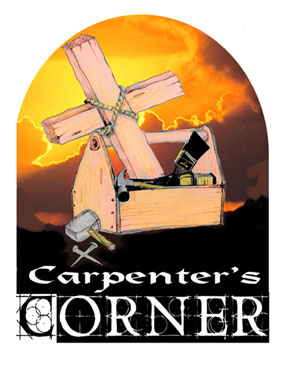The Rabbi’s fur lined hat pressed firmly against the Western Wall of the Old City of Jerusalem. Many other men who were at the wall that day bobbed back and forth as they prayed. A few men wore small leather boxes filled with scripture around their foreheads and forearms.
This section of the Western Wall is the last remaining evidence of the existence of the second Jewish temple that King Herod remodeled just before Jesus’ birth. The wall’s limestone face is as close as Jewish men can get to their heritage, their past and their God. Mount Moriah or the Temple Mount was once the foundation for the original Temple that King Solomon built for God.
Within the temple’s walls sat furniture that had been commanded by God to be built by Jewish artisans, during the desert wanderings after their exodus from Egypt. One piece of furniture had a significant purpose, it was the most priceless treasure on the face of the earth; the ark that holds the covenant of God.
This ark, box or container held the stone tablets that God wrote the Ten Commandments on. This gilded box was covered by a solid gold lid which was called the Mercy Seat. Each year according to the book of Leviticus, priests were to take two young goats and cast lots before them. The High Priest would then lay his hand on the lamb which the lot had fallen, symbolically transferring the nation’s sin onto that animal while the other animal, the scapegoat, was unshackled, set free or pardoned into the wilderness.
The blood of the sacrificial lamb was then sprinkled over and onto the Mercy Seat. This process is known as atonement or the covering of sin by blood, which was mandated by God and recorded in the books of Leviticus chapter sixteen and Hebrews chapter nine.
Likewise, the feast of Passover, commemorating God’s mercy, deliverance and omnipotence, was wonderfully designed to be a foreshadow of what God would one day accomplish when He would send His own Son to become “The Lamb of God that takes away the sin of the world!”
For centuries the Jewish people have faithfully kept the Passover and many do to this day. But since Jesus of Nazareth, Messiah, was born and died, the world has no more need of a temple, priesthood, sacrificial animals or even the Ark which holds the Covenant.
Here is where the story gets interesting and filled with both wonder and speculation. King Josiah ordered the ark be returned to the temple in around 621 BC thirty-five years before Nebuchadnezzar sent his troops a second time to raise the city of Jerusalem destroying the temple in the process. Before its destruction, all the furniture in the temple was seized and a detailed inventory list was written and recorded.
Found in the books of 2 Kings 24:13, 2Kings 25:13-18, and Jeremiah 52:17-23, very detailed accounts were given of all items taken to Babylon from the “King’s House” and the “House of the Lord”. The lists meticulously record small items like spoons, but interestingly, the Ark isn’t mentioned as being among the bootie taken.
The city of Jerusalem was naturally protected by deep valleys and cliff faces to the east, south and west areas of the old city footprint. It was only from the north side that the city was vulnerable to attack. In order to breech the city’s walls and fortifications the Babylonians had to construct massive siege walls or scaffolding at a safe distance from Jerusalem’s troops.
The ark holding the Ten Commandments with the Mercy Seat as a cover would have been the Nation of Israel’s most prized possession. With the city surrounded, the high priest would have ordered the ark to be buried, securely hidden so as to not be captured by the Babylonians who were sure to invade the city given enough time.
It is speculated that the prophet Jeremiah, with the help of Temple priests, dug many tunnels near or between the city walls and the siege walls under the cover of darkness then hid the ark in one of them. Since the ark has never surfaced could it be that this most holy artifact was buried, through God’s inspiration, on the north side of Jerusalem and remains hidden there to this day.
Just after the crucifixion of Jesus, there was a great earthquake. Some of us believe and speculate that when the Roman Centurion pieced Jesus’ side, blood and water poured out, seeped through cracks rent in the limestone, sprinkling the Mercy Seat for one last time.














